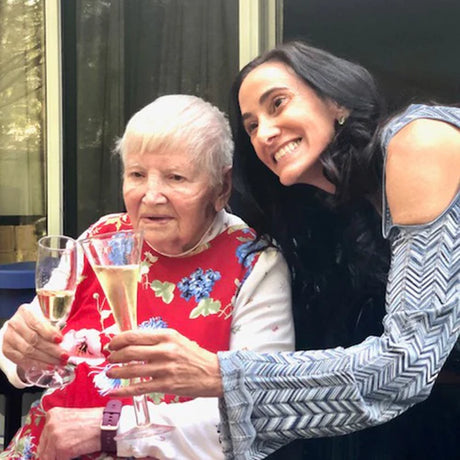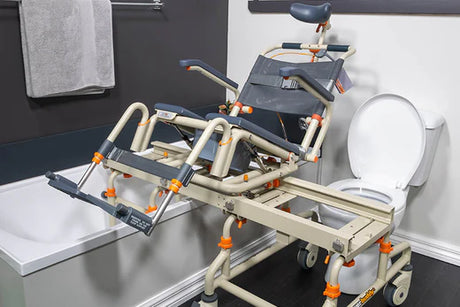At Showerbuddy, the ethos of our product design has always been to best serve mobility impaired people to use the bathroom in the manner most comfortable and preferable. This can be exemplified in the breadth of our product range – accommodating wet rooms, bathtubs, and shower units. But it’s most evident in the level of adjustment and customisation of our products themselves.
Finding the right height, angle and seating position needs to be determined by the occupational therapist and the individual themselves. If a particular body position calls for one leg higher than the other, a neck support or even a tilt backwards, Showerbuddy’s range has the system and optional accessories to make this a possibility.
In this article we’ll speak to some of the benefits of a system like Showerbuddy, where the solution can be based around the user – not the other way around.

Foldable Armrests
The armrests on Showerbuddy are designed to be at a height that’s ideal for most adult sizes. But we know that for children or smaller adults, the space between arm rests needs to be reduced to accommodate this size. That’s why we also offer accessories to bring this gap in for better function, support and comfort.
Fold Away Footrests

The foldaway footrest is also ideal for a user who is reaching a level of mobility where they themselves can get out of the chair. When learning to stand and walk again, removable footrests allow a more free movement to plant the feet and post up off the (locked) chair to stand.
Backrest Height
Optional Accessories
Neck Rest Assembly
If the user is getting rehabilitation on a severe neck or spine injury, bathing may require secure support of the neck. The Neck Rest Assembly attachment is affixed to the frame of the Showerbuddy Transfer Range (standard on SB2T and SB3T, optional accessory on SB1 and SB2) and can be adjusted to lean forwards or backwards to achieve an optimal position for the user. The pillow is soft and comfortable without sacrificing support. And like all our accessories, it can simply be added or removed as the user’s mobility and support needs call for.

Seat Belt
When the user doesn’t yet have the body control or core strength to stay in a central seated position, seat belts can be used across the lap and chest to keep stable. Then, a carer can transfer and bathe the user without worry of an injury or suddenly needing to support a slumped over client or loved one. These seatbelts come standard with our Transfer range and can be ordered through your distributor as well.

Range of seat openings
The standard commode opening of Showerbuddy’s main chairs is a front-facing opening, with room for barrier-free toilet use. But we have a vast range of alternative commode openings to cater for carers and users who may have an injury, care plan or bathroom that is simply more compatible with an opening to the left, the right, smaller, larger or even an opening without a gap to any edge – meaning a closed seat with a hole in the middle. We also offer a full cushion overlay to close off the commode opening, allowing the user to sit comfortably for longer (after toilet duties).
We know that every physical rehabilitation is different, so offering these seat cushions in a variety of options ensures we can support as many people as possible.
The swapping out of these cushion covers is reasonably straightforward as well, so if a user’s evolving mobility calls for something different, it’s just a matter of ordering and quickly installing this for an OT or carer.

Transfer Bridge
The standard length of our transfer bridge is designed to work in as many bathrooms as possible, but we know that some rooms call for a shorter bridge to fit the unit into the space. That’s why we offer smaller bridge accessories – and a tool called BathCheck to help measure up the bathroom in question.
If our standard shorter bridge accessories aren’t quite right, we can custom order a bridge to the desired length. This is all in the name of getting the benefits of Showerbuddy’s Transfer range to as many who need it as possible.

Further reading on the topic
If you’re interested in learning more about this topic, you can find useful information via the following resources:
- Browse the full range of Showerbuddy products
- Read and watch reviews of Showerbuddy on our reviews page
- Read more about customising the Showerbuddy product in our blog
























![Toilet Training A Young Child With Mobility Challenges [And How A Shower Chair Can Help]](http://shower-buddy.com/cdn/shop/articles/toilet-training-disabled-child_520x500_a90e5234-d372-435d-aa56-8da15dd3836c.webp?v=1722557239&width=460)


























